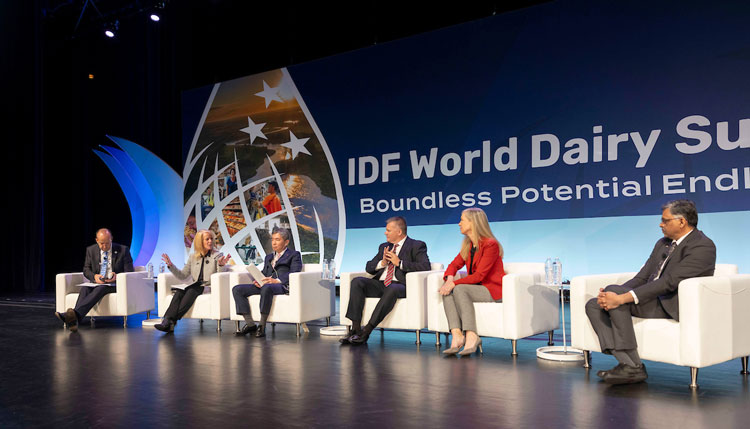
Milk and dairy products have a unique opportunity with consumers. As staple foods long relied on by shoppers, innovative products and technologies also allow them to reach new people and provide valuable benefits. That’s a critical balance as the global dairy industry looks to meet the needs of a growing and changing world while maintaining the high reputation it already holds.
During the International Dairy Federation’s World Dairy Summit earlier this month, industry leaders from around the globe came together to discuss how they are working to address the changing attitudes and needs around food. As Jayen Mehta, managing director of the dairy co-op that is the largest food brand in India described, “Innovation is not a luxury; it’s a necessity.”
Consumers are looking for products they can feel good about from a production standpoint and for their physical health. Barbara O’Brien, president and CEO of Dairy Management Inc., noted the work the U.S. dairy industry is doing to invest in wellness science, such as the new relationship established with the Mayo Clinic.
That’s not just an American trend. The proliferation of more Western diets in the world and a greater emphasis on wellness is good for dairy, said Miles Hurrell, CEO of New Zealand’s Fonterra. Consider that in Japan, leading milk processor Morinaga Milk also produces and sells functional ingredients from its plant. Its president, Yohichi Ohnuki, also said they are researching milk’s role in gut and intestinal health as well as memory.
Milk provides 13 essential nutrients naturally, but Patricia Stroup, chief procurement officer for Nestlé, noted that they view milk and dairy products as a great conduit to supply even more nutrition in the form of micronutrients. “We sell milk into many areas of the world with severe micronutrient deficiencies,” she explained.
On the environmental side, there are advancements to be made in both the farm and processing sectors to help consumers feel confident in what they are purchasing and address a changing climate.
Fonterra is researching methane reducting additives, said Hurrell, and recognizes that changes can be made in packaging and along the supply chain, too. Packaging is a significant point of focus for Nestlé, too, as Stroup described they are testing out a universal metal cup for their products that could be used for other items as well. The global company has set a goal to use 100% reusable or recyclable packaging by 2025. Already, 86.5% of their packaging is recyclable.
Of course, there is also food waste itself, which must be addressed at every stop along the supply chain from consumer back to the farm. Ohnuki said finding ways to process milk with less waste will be a valuable area for the industry to explore.
Whether it is on the farm, at the plant, or somewhere in between, there is so much opportunity for dairy to build upon its high-quality reputation with product, accessibility, environmental, and nutrition advancements. That’s something the whole world can get behind because dairy is stronger as a global community.








